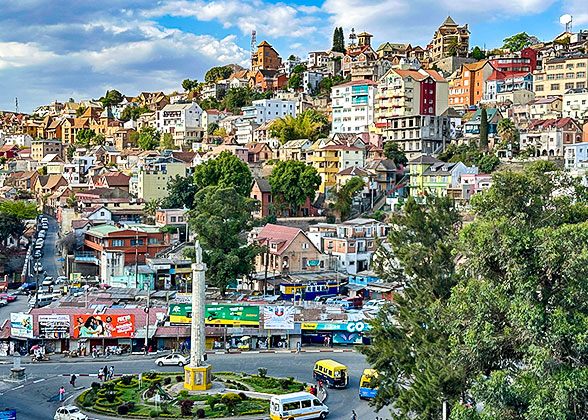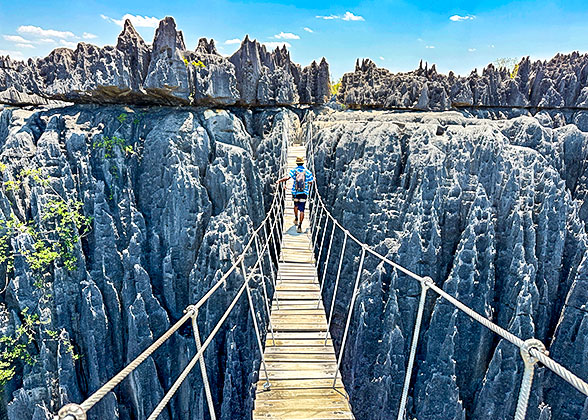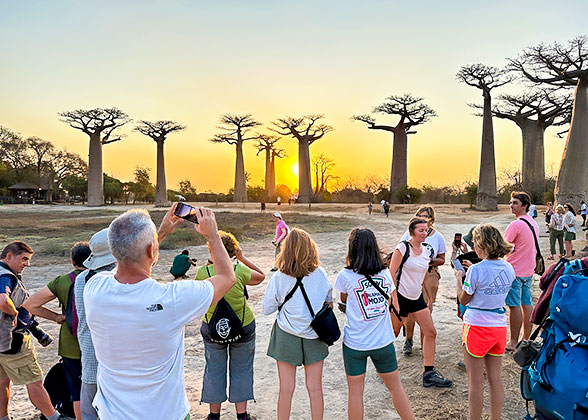Bekopaka Weather
The weather of Bekopaka, a village in the west of Madagascar, is characterized by high average temperatures and an obvious seasonal rainfall variation. The Tsingy de Bemaraha National Park and the Manambolo River are respectively to the north and south of Bekopaka, and the village can therefore provide you with multiple sightseeing experiences.
![]() See also: Madagascar Weather
See also: Madagascar Weather

Tsingy de Bemaraha National Park
|
Hot above 20°C (68°F) Averagely
Bekopaka, with a tropical savanna climate, is hot throughout the year and its monthly mean low temperatures are basically no lower than 21 degrees Celsius (70 degrees Fahrenheit). Therefore, even at night in the coolest July, there is no need to bring additional clothes to keep warm, which helps you travel light to a great extent. Besides, during the day, the monthly average high temperature is no less than 26°C (79°F). It can reach 30°C (86°F) or above from October to March, when heatstroke prevention is necessary while you’re viewing the Tsingy landform or enjoying a canoe tour.
High/Low Temperatures of Bekopaka
Two Seasons with Distinct Rainfall Differences
The major feature of the tropical savanna climate of Bekopaka is the rainfall difference between the two seasons. Jointly affected by the southeast trade wind and the northwest monsoon, Bekopaka gets abundant rainfall and many rainy days per month of above 13 from December to April, and these months consist of the local rainy season. The seasonal rainfall difference further leads to a variation in monthly mean humidity. In the rainy season, the humidity is high between about 72% and 78%, and it ranges from about 64% to 70% between May and November, the local dry season.
Average Rainfall of Bekopaka
Humidity Graph of Bekopaka
Sunrise, Sunset, & Daytime
Bekopaka enjoys its longest daytime in December, when the sun rises at around 5:20 and sets at around 18:40, making the daytime as long as about 13h20min. As for the shortest daytime here, it’s about 11 hours long in June, with the sunrise and sunset times respectively being at around 6:30 and 17:30. What should be noted is that the UV index is typically 6 or 7 in Bekopaka all year round, a relatively high level that may cause sunburn if you are exposed to the sunshine for a long time. So whether you hike in the Tsingy de Bemaraha National Park, or take a canoe tour on the Manambolo River, sun-protective measures are always requisite.Bekopaka Weather by Month and Travel Recommendation
| Month | Weather |
Peak/Slack Season |
Recommendation Rate |
|
January |
Extremely Rainy, Hot |
Slack Season |
  |
|
February |
Rainy, Hot |
Slack Season |
  |
|
March |
Rainy, Hot |
Slack Season |
  |
|
April |
Rainy, Hot |
Slack Season |
  |
| May |
Sunny, Hot |
Peak Season |
    |
|
June |
Sunny, Hot |
Peak Season |
    |
|
July |
Sunny, Hot Day and Slightly Cooler Night |
Peak Season |
    |
|
August |
Sunny, Hot |
Peak Season |
    |
|
September |
Sunny, Hot |
Peak Season |
    |
|
October |
Sunny, Hot |
Peak Season |
    |
|
November |
Sunny, Hot |
Peak Season |
    |
|
December |
Rainy, Hot |
Slack Season |
  |
Bekopaka Rainy Season: December-April
Climate Overview

Muddy River in Rainy Season of Bekopaka
|
Travel Advice
Heavy rain this season makes dirt roads muddy, slippery, and even impassable, leading to the Tsingy de Bemaraha National Park being closed. Besides, the water of the Manambolo River has a sharp rise and flows faster in the wet weather conditions, making it dangerous and even impossible to make a canoe tour. Therefore, the rainy season isn’t seen as a good time to travel to Bekopaka.Bekopaka Dry Season: May-November, Also Best Visit Time
Climate Overview
From May to November, the weather of Bekopaka is also hot, but not as wet or humid as it is in the rainy season. With monthly mean temperatures between 21 and 31°C, the village basically experiences no cold days. Rainfall is dramatically lower this season and only accounts for 9% in the annual total. Monthly mean precipitation just ranges from 4 to 29 mm and each month, there are no more than 7 wet days averagely. Besides, monthly mean humidity is no higher than 70% and basically won’t make people feel uncomfortable.
|
|
|
Travel Advice
Sunny and cloudy days dominate in the dry season, 2025, and this is the best time to hike and view unique limestone formations and endemic animals in the Tsingy de Bemaraha National Park, explore caves on the riverside, and admire deep gorges by canoe.What to Bring for Visiting Bekopaka
(1) To prevent sunburn under intense UV radiation on sunny days, please bring your sweat-resistant sunscreen or sun-protective jacket.
(2) When you take a 4×4 vehicle to the national park, which is only accessible in the dry season, an anti-dust mask helps protect against flying dust on dirt roads.
(3) As mentioned above, you may have no chance to visit neither Tsingy de Bemaraha National Park nor the Manambolo River if you go to Bekopaka in the rainy season. But if you do come here during this period, be sure to bring umbrellas and waterproof shoe covers.




